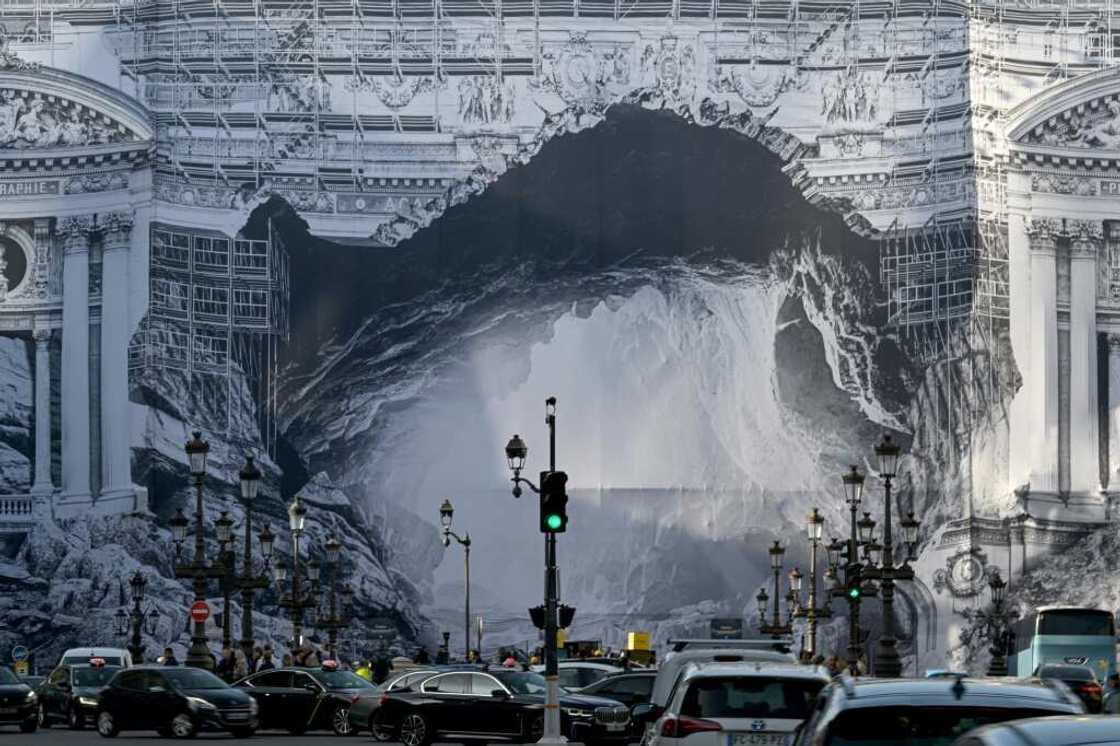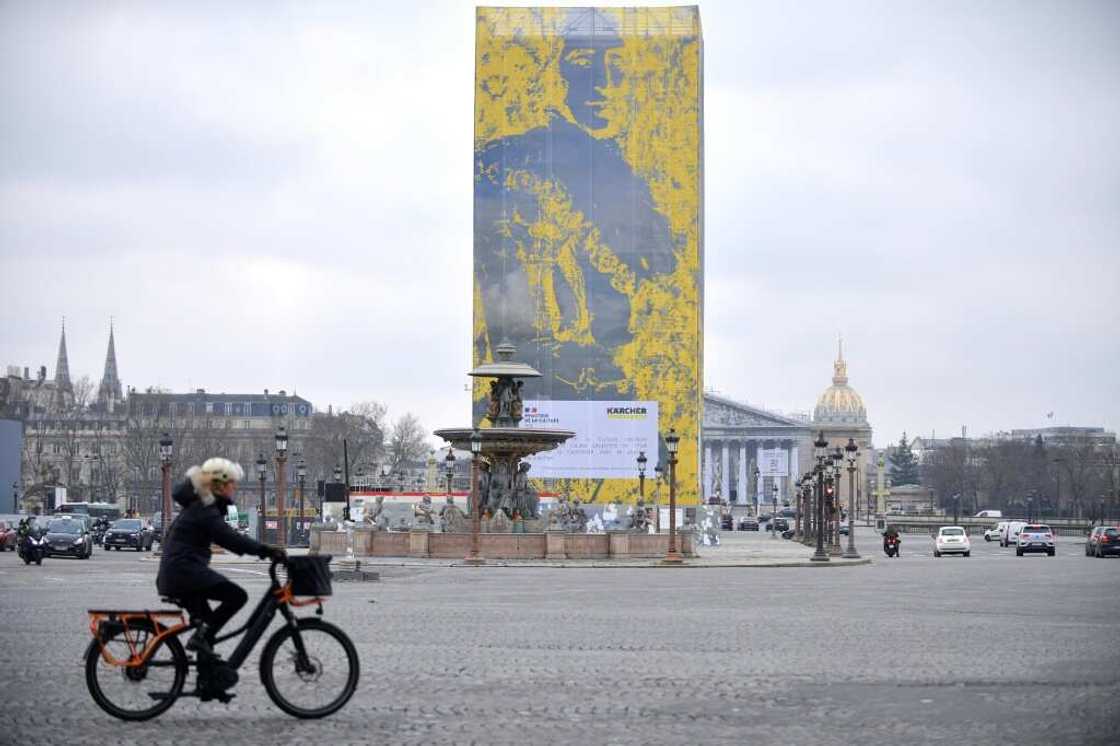Greens see red over giant Paris billboards

Source: AFP
Does beauty lie in the eye of the consumer?
That may be the impression many tourists have of Paris, where a host of city landmarks -- from the Opera Garnier to the Obelisk of Luxor on the Place de la Concorde and part of the Louvre Museum -- have been covered by giant billboards in recent years.
The environmentalist Greens party -- long a thorn in the side of the French capital's Socialist mayor Anne Hidalgo -- are kicking up a stink over a giant hoarding on a new Louis Vuitton store soon to open on the famed Champs-Elysees avenue.
The building, owned by luxury giant LVMH, is draped in a protective covering that resembles a Louis Vuitton trunk, one of the brand's flagship products.
Ecologist councillors have written to Hidalgo, questioning the legality of the hoarding.
Billboards are allowed on listed historical buildings to finance facade work, but the law says adverts must not make up more than half of the protective covering, the Greens insist.
PAY ATTENTION: Donate to Legit Charity on Patreon. Your support matters!
"In this case, we're talking about more than 50 percent, since they are covering the roof as well," Green politician Emile Meunier, co-sponsor of the question, told AFP.
In a written statement to AFP, Paris authorities responded that in this case, "the tarpaulin is not considered to be advertising because the building belongs to LVMH."
The authorities "will ask the owner to pay a tax of 1.7 million euros ($1.8 million) for the duration of its installation, which is scheduled to run until 2027," the statement said.
It added that Architectes des Batiments de France, the official body overseeing planning for historic buildings, has given "approval".
Contacted by AFP, neither LVMH nor the Ministry of Culture -- which is responsible for heritage issues -- were willing to comment.
LVMH's founder and chief executive Bernard Arnault is currently the world's second-richest person after Elon Musk, according to Forbes.
Boost to consumerism?
But the Louis Vuitton store is one of many examples.
For a number of years, a number of listed Parisian buildings have been hidden behind huge advertising tarpaulins while work was carried out: the Museum of Decorative Arts in a wing of the Louvre; the famous obelisk on the Place de la Concorde; the Opera Garnier, the Madeleine church with its majestic Greek columns; and some facades of the Place des Vosges.

Source: AFP
"At some point, people have to be able to enjoy the beauty of their city without being assaulted by injunctions to consume more and more," said Meunier, who said he opposed "the principle of advertising altogether".
"As an ecologist, I'm against advertising, particularly in the public space; I see it as an aggression and a boost to over-consumption", he said.
Nevertheless, Jeanne d'Hauteserre, the right-wing mayor of the eighth arrondissement where the Champs-Elysees, said that as soon as she took office in 2014, she gave the green light to billboard advertising on churches undergoing renovation in order to cut costs and speed up the refurbishment.

Read also
Dangote Group responds to BUA, accuses firm of sponsoring false, negative reports against It
A former advertising executive, the district mayor hit back at critics, saying that buildings allowed to fall into disrepair would become a danger.
"The day they get something falling on their heads, they'll be happy!" she said.
As for the LVMH project, "either we get an ugly tarpaulin, or we get a pretty, improved tarpaulin", she said.
"From the moment restoration work is needed, there has to be one."
Passers-by on the Champs-Elysees expressed mixed feelings about the Louis Vuitton billboards.
"I think it's nicer than rotting scaffolding", Beatrice Boue, a resident of Antony, in the southern suburbs, told AFP.
"I don't particularly like (it)," said Lucyna Milosz, a Polish tourist.
"I understand they have to cover it, but I don't like when there are pictures. As long as there is no commercial it's fine. They should have it covered and hurry up!" she laughed.
Source: AFP




